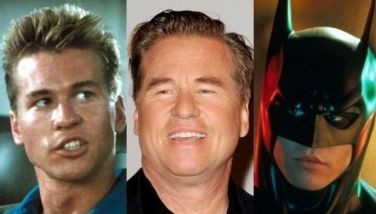A timely reminder from history
July 24, 2004 | 12:00am
 You either hate her or are charmed by her. But you can’t deny the fact that there was no other former Malacañang resident as colorful as Imelda Romualdez Marcos.
You either hate her or are charmed by her. But you can’t deny the fact that there was no other former Malacañang resident as colorful as Imelda Romualdez Marcos.
Among the Philippine First Ladies, she is the most beautiful and the most statuesque.
At the peak of her power and at the height of her ostentatious ways (while her husband, the late President Ferdinand Marcos, was supposedly pushing for austerity measures in the country), we watched her either in disgust or admiration – depending on which side of the political fence we were in.
It was easy for her to dazzle people. In fact, when she returned to the Philippines in late 1991 – after she and her family had been thrown out of this country in 1986 – I was surprised by the warm reception she received from a rather large section of our population. At one wedding reception I attended shortly after her return, people were still falling in line to have their pictures taken with her. And that still happens today.
I therefore understand fully the reason why US-based Filipino filmmaker Ramona Diaz chose Imelda Marcos as the subject of her documentary. The former First Lady is still good copy and the public will always be interested in her.
And now that the film Imelda is showing in local theaters, people are coming in droves to see it and this is rather unusual because we are a moviegoing public that do not care for documentaries. But the subject is Imelda. So it doesn’t really come as a surprise anymore that people are paying to see Ramona Diaz’s film.
For a while, of course, we thought we would never see the movie after Mrs. Marcos sought legal action to stop the showing of the documentary on her life. But after watching the film a couple of days after it opened in local cinemas, I can understand why the TRO on this movie was lifted. In the first place, the documentary is very fair to Imelda Marcos. Ramona Diaz sees to it that both sides – the pro-Marcos an anti-Marcos – are given equal time.
Too bad for the Imelda faction, those who try to come to her defense unwittingly throw in the process some more dirt in her already muddied image. For instance, there was this niece of hers who says something about the Filipino’s love for shoes and how the Pinoys couldn’t have enough of them. I can imagine anti-Marcos people in the audience throwing their worn-out shoes at her while talking on the big screen because – for heaven’s sake – how many poor Filipinos are out there who had never known how it feels like to wear shoes?
Ramona Diaz – again in the spirit of fairness – always tries to give Imelda the last say in the documentary. But what does Imelda do? She keeps running around in circles by drawing, well, circles and triangles and hearts – upright and upside down.
In the entire documentary, Imelda Marcos is consistently inconsistent. When she starts listing down her own version of her seven portals to success, she goes way past No. 10 and seems bent on going on and on, except that the director wisely cuts it off before the ex-First Lady could proceed to No. 11 and 12 and beyond boredom.
Now, I understand why Carmen Pedrosa decided to junk interviews with Mrs. Marcos and find other sources while the esteemed writer was working on The Untold Story of Imelda back then. You simply can’t get any coherent statement from Imelda Marcos
But back to the film, even when Mrs. Marcos starts choking the viewers with philosophical views that only she understands, the documentary remains kind and polite to her. (Even the lighting and the positioning of the camera show the best angles of the now 75-year-old former First Lady).
Up to the very end of the film, Ramona Diaz doesn’t even inject her personal views and it’s the viewers who form their opinions on how we should judge this half of the infamous conjugal dictatorship.
I was hoping, however, to find through this film some confirmation on a number of Imelda Marcos myths – like how she supposedly made a presidential plane take a U-turn while already up in the skies because the staff failed to load the cheese.
And what about the failed assassin, Carlito Dima-ilig? Why did he try to kill Imelda on the afternoon of Dec. 7, 1972 during an awarding ceremony at Nayong Pilipino? I was hoping I would get an answer to that through this documentary. But I guess that would remain a mystery unsolved along with the assassination of Senator Benigno Aquino Jr.
However, I still hail Imelda as a well-put together documentary that should be viewed by every Filipino – particularly the young generation. It should serve as a reminder to us so that we do not allow history to repeat itself.
Prior to the public exhibition of Imelda, I was discussing with fellow Manunuri Dr. Roland Tolentino the possibility of including this movie in the local awards race next year. Of course, you have to check the film’s citizenship first. But if it does qualify for local awards, it will be in competition for Best Picture and in various technical categories – particularly editing and cinematography (which already received a prize at the Sundance Film Festival).
But what about in the acting awards? I didn’t get to discuss this with Dr. Tolentino. However, after watching the film, maybe we can include the name Imelda Marcos in the Best Actress category. After all, it’s still a performance that she displays here in Imelda. And what a great performance it is.
But this time, let us not be fooled by it.
BrandSpace Articles
<
>
- Latest
- Trending
Trending
Latest
Trending
Latest
Recommended




















 Exclusive
Exclusive












